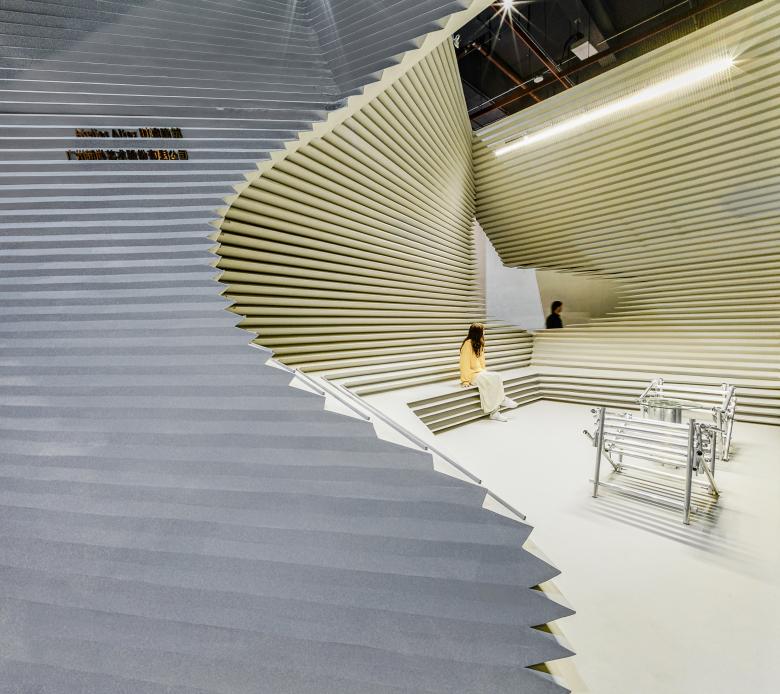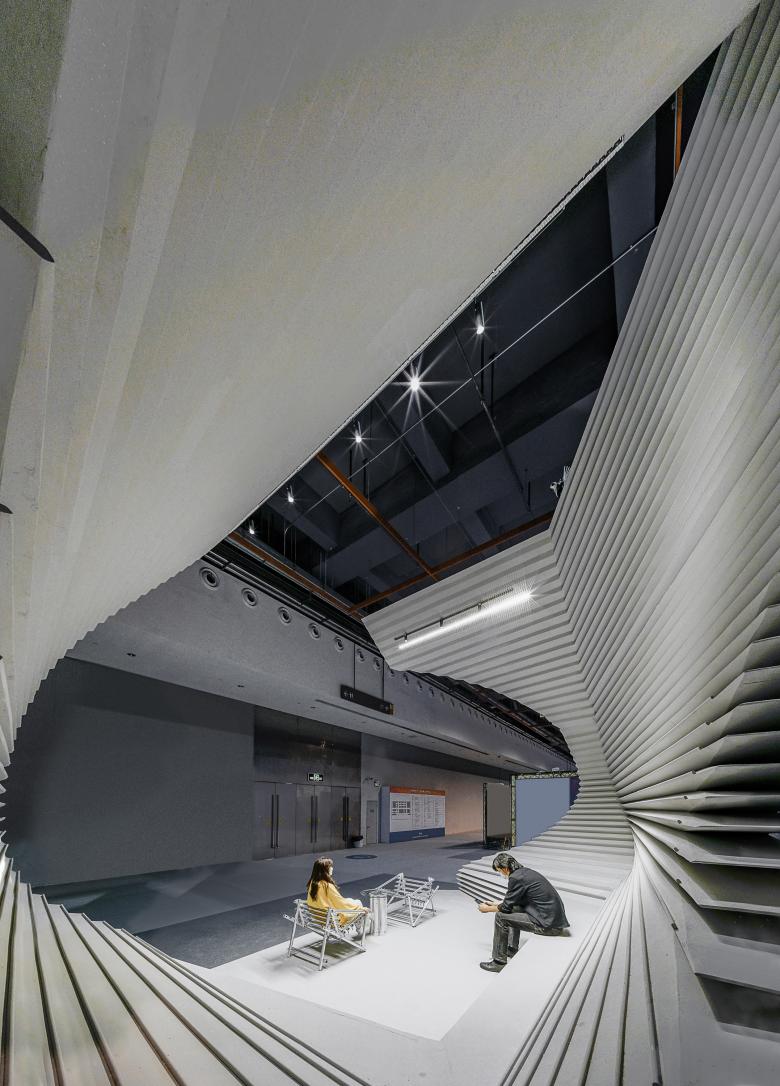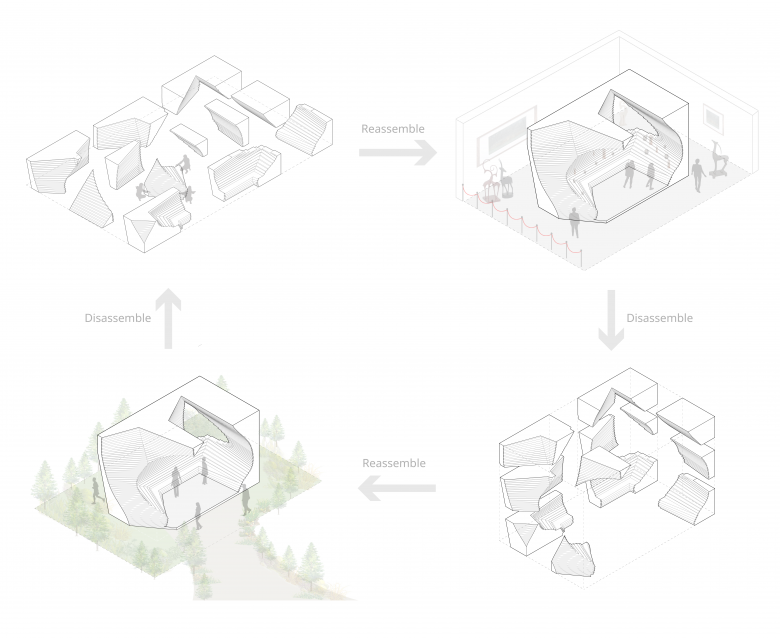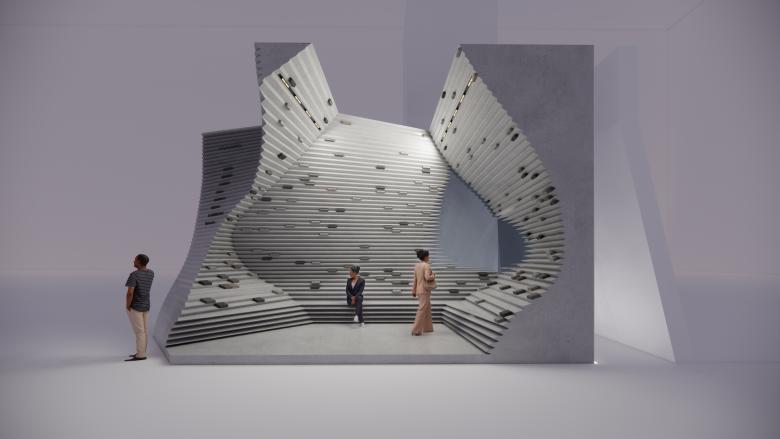Dual-Purpose Exhibition Pavilion
Beijing, China
- Architects
- Atelier Alter Architects
- Location
- 100022 Beijing, China
- Year
- 2022
- Team
- Anping Li, Xinchen Yang, Jinghan He
- FF&E
- Atelier Global
- Manufacturer
- Guangzhou Style Arts Co., Ltd.
An Exhibition Pavilion that Can Be Recycled and Reused
Generally speaking, exhibits on display during an exhibition can be recycled and reused, but the hard decorations on the booths are often destroyed, becoming construction waste, after only a short exhibition period. Atelier Alter Architects was invited to design a concrete exhibition pavilion this time. The question to consider here was: is it possible to make a small booth of 24 square meters reusable after the exhibition concludes?
A potential solution to the issue is to design a booth that could be dismantled and moved outdoors after the exhibition, providing the public with a resting pavilion; a form that satisfies the display requirements as well as those of an outdoor rest pavilion was therefore the ultimate design goal.
We redefine the "exhibit-space," which is a conventional antithetical prototype, trying to break the traditional model of a sculpture being seen and contextualized in space: sculptures are endowed with the properties of the space accommodating, protecting, and supporting them; while the space is given the property of being seen in this case, enabling the viewer to enter the interior space of the sculpture, the final form is like an inverted sculpture. The 720 degrees both inside and outside can leverage its physical strength and feel what it needs to be seen.
The final form was obtained through careful deliberation: the folded skin was distributed across the entire surface, which met the needs of exhibition materials visible at the height of the average person; a platform for placing promotional materials was formed at seat-level, which can be used as a platform in future, and for outdoor seating; the cantilevered roof can also block sunlight outdoors, and the final form resembles an inverted sculpture.
The materials used include dry-hanging weather-resistant GRC (Glassfiber Reinforced Concrete ) and an internal steel frame, which was treated with anti-rust treatment.
Today, when resources are cherished due to recognition of the impacts of pollution and scarcity, we aim for social responsibility in design by reusing exhibition facilities after the exhibition in which they are used concludes - in the future, the main body of the exhibition will be disassembled and re-installed in different outdoor environments, so that, whether it is in the exhibition space or becomes part of a residential space, commercial space, or leisure space, it can endure and continue to add value to the human landscape.
Related Projects
Magazine
-
Winners of the 5th Simon Architecture Prize
1 week ago
-
2024, The Year in …
1 week ago
-
Raising the (White) Bar
1 week ago
-
Architects Building Laws
1 week ago














